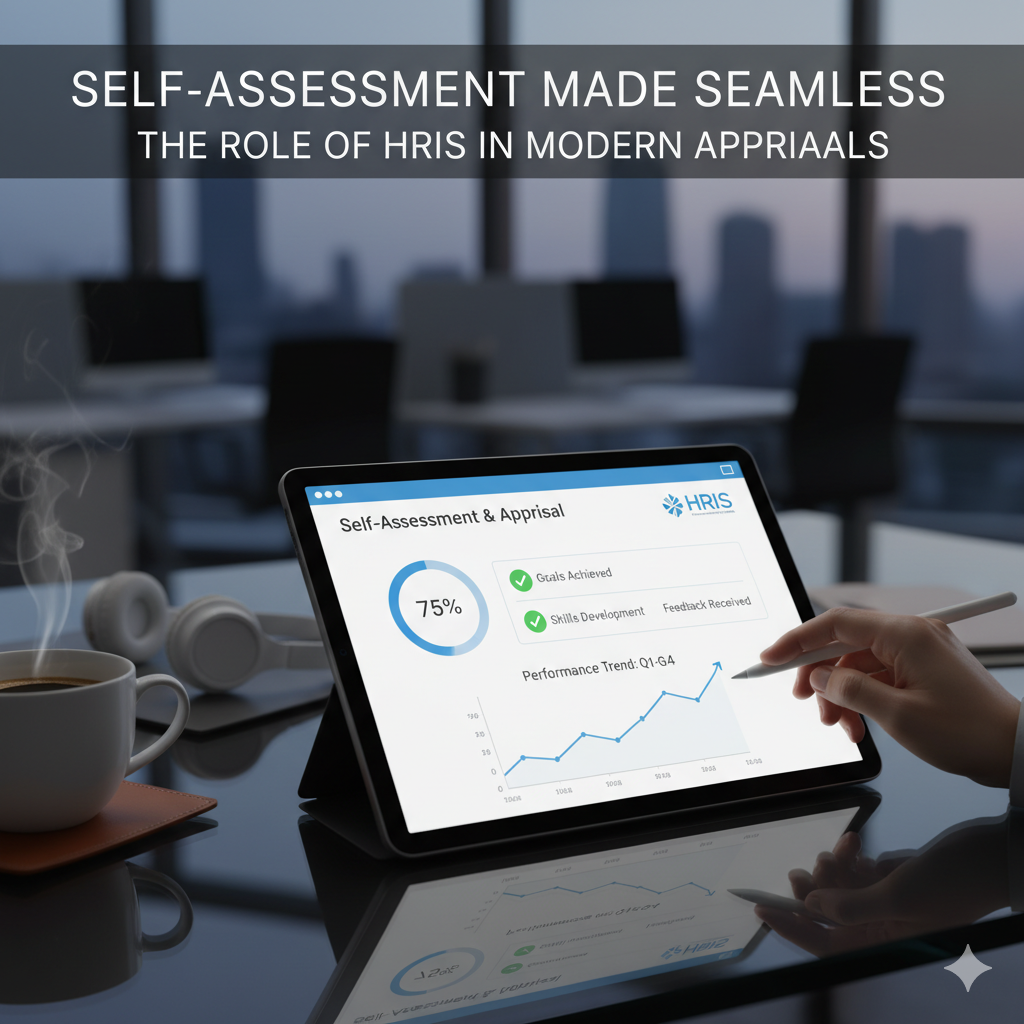In today’s fast-paced work environment, traditional performance reviews are no longer enough. Employees crave meaningful feedback, and organizations need agile tools to manage talent effectively. Enter HRIS (Human Resource Information System) — a game-changer in modern performance appraisal processes, especially when it comes to self-assessment.
What Is Self-Assessment in Performance Appraisal?
Self-assessment is the process where employees evaluate their own performance, achievements, and areas for improvement. It fosters reflection, accountability, and engagement — key ingredients for a thriving workplace culture.
Benefits of Self-Assessment:
- Encourages employee ownership of goals
- Promotes honest reflection and growth
- Enhances communication between staff and managers
- Provides context for manager evaluations
Why HRIS Is the Ideal Platform for Self-Assessment
Modern HRIS platforms integrate self-assessment tools directly into performance workflows, making the process seamless and scalable.
Key Features of HRIS-Enabled Self-Assessments:
- 📅 Automated scheduling of appraisal cycles
- 📝 Customizable templates for different roles and departments
- 📊 Real-time analytics to track completion and performance trends
- 🔒 Secure data storage for compliance and confidentiality
- 🔄 Integration with goal tracking and feedback modules
How HRIS Improves the Self-Assessment Experience
- User-Friendly Interface: Employees can complete self-assessments from any device, with intuitive dashboards and guided prompts.
- Timely Reminders and Notifications: HRIS systems send automated alerts to ensure deadlines are met without manual follow-ups.
- Data-Driven Insights: Managers can view self-assessment results alongside KPIs, peer feedback, and historical performance data.
- Custom Evaluation Criteria: HR teams can tailor self-assessment forms to align with company values, competencies, and strategic goals.
Best Practices for Implementing Self-Assessment in HRIS
To maximize the impact of self-assessments, HR leaders should:
✅ Train employees on how to reflect constructively
✅ Keep forms concise and focused on measurable outcomes
✅ Encourage honesty and avoid punitive language
✅ Use results to spark meaningful conversations during review meetings
Real-World Example: Self-Assessment in Action
A mid-sized tech company implemented self-assessment via their HRIS platform. Within one quarter, they saw:
- 40% increase in appraisal completion rates
- 25% improvement in employee satisfaction scores
- More balanced feedback between managers and staff
This transformation was driven by automation, transparency, and employee empowerment.
Conclusion
Self-assessment is no longer a “nice-to-have” — it’s a strategic necessity. With the right HRIS system, organizations can make self-evaluation seamless, insightful, and impactful. By embracing digital tools, HR teams unlock a more engaged, accountable, and high-performing workforce.

